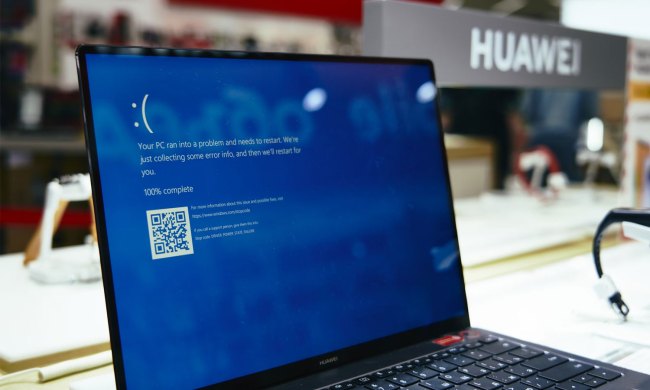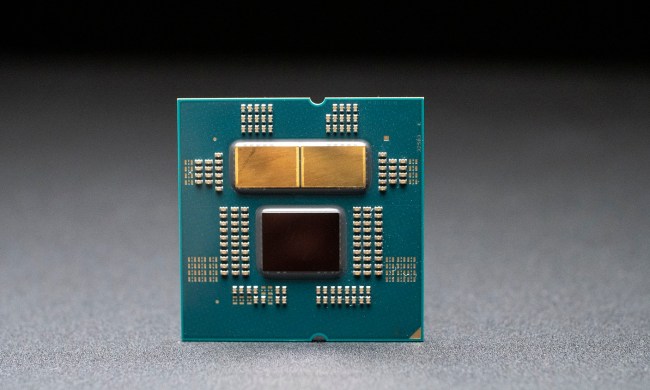For years, Raspberry Pi — the world’s most innovative tiny computer — has turned the tech world on its head.
This plug-and-play computer isn’t much larger than a credit card and fits easily in your pocket, so you could actually take it with you anywhere you go. All you need to do is plug the device into any monitor or television, as it doesn’t come with its own screen, and you’re ready to go.
But what can you do with a Raspberry Pi? In short: Many of the activities you enjoy when using a regular computer, and then some. You can do everything from managing LED displays to creating a weather station to using your Raspberry Pi as a low-cost web server to home automation projects.
There are near-endless possibilities to what you can do with this nifty device. We’ll walk you through some cool, quirky, and practical projects that might inspire your next Raspberry Pi build in 2022.
What is a Raspberry Pi?

Developed in the United Kingdom by the Raspberry Pi Foundation, this small, low-cost device has changed the way people explore computing and complete everyday tasks. This tiny green circuit board with embedded electronic components puts the power of computing in the palm of your hand.
It’s a great way for computer science beginners to understand programming, coding, and computing. But it’s also a low-cost way to bring computer-level smarts to any project you may have.
To get started, all you need to do is plug the single-board computer into a monitor or TV using a micro USB port and hook it up to a standard keyboard and mouse. The company even sells official Raspberry Pi peripherals — a keyboard and a mouse — that plug into their device. There are also various accessories available through different companies, including add-on boards, USB-C and other power supplies, and camera modules.
You might be wondering what connectors you need to use your Raspberry Pi. Depending on the model you’re using, you’ll need either a micro HDMI to HDMI cable or a standard HDMI to HDMI cable with a micro HDMI adapter to connect your device to the HDMI port of a monitor or other display. It also has general-purpose input/output pins that can be used for connecting to various components depending on the project you’re working on.
The Raspberry Pi OS (previously referred to as Raspbian) is a Debian-based operating system. It’s a free and open-source Linux-based system that works with various devices, including laptops, desktops, and servers. While some Raspberry Pi models can operate using Windows, Linux is the recommended system for these devices.
What can you use a Raspberry Pi for?
Raspberry Pi can be used to learn programming languages, such as Scratch and Python, and to learn how computers work, but its uses are much broader than that. It functions much like a regular laptop or desktop computer, allowing you to surf the web, watch videos, create spreadsheets and word-processing documents, and play games. (Just don’t get too excited, as it isn’t that powerful compared to a laptop or desktop.)
Digital makers have also taken to Raspberry Pi, as they can be programmed for specific tasks and purposes. These devices have been used in various projects, including music machines, weather stations, and Wi-Fi extenders.
Raspberry Pi models
While early concepts for the Raspberry Pi came about in 2006, the first retail model — Raspberry Pi Model B — was released in 2012. Since then, there have been numerous models.
Here are some models available to users:
- Raspberry Pi Pico: This new Raspberry Pi microcontroller board is flexible and super affordable. It’s programmable in C and MicroPython.
- Raspberry Pi 400: This Raspberry Pi board offers a complete personal computer with a quad-core 64-bit processor built into a portable keyboard.
- Raspberry Pi 4 Model B: The Raspberry Pi 4 Model B allows you to run two monitors at once with a 4K output, making it easy to juggle multiple tabs and tasks.
- Raspberry Pi 4 Compute Module: This model incorporates the power of Raspberry Pi 4 in an even smaller, more compact model that’s designed for deeply embedded applications. It also boasts a quad-core ARM Cortex-A72 processor and dual video output.
- Raspberry Pi 3 Model A+: This version offers the same mechanical format as the Raspberry Pi 1 Model A+ but with a 1.4GHz 64-bit quad-core processor.
- Raspberry Pi 3 Model B+: This was the final revision for Raspberry Pi’s third-generation single-board computer. It also added gigabit ethernet connectivity to the device.
- Raspberry Pi 3 B: This single-board computer came with wireless LAN and Bluetooth capabilities. It’s the earliest model of the third-generation Raspberry Pi, replacing 2 Model B.
- Raspberry Pi 1 B+: This is the final version of the original Raspberry Pi compute model that replaced Model B and was later superseded by 2 Model B.
- Raspberry Pi 1 A+: This replaced the original Model A and is considered to be the low-cost variant of Raspberry Pi.
- Raspberry Pi Zero 2 W: This model is just as small as the Zero but five times as fast with a quad-core 64-bit ARM Cortex-A53 processor that operates at 1 GHz.
- Raspberry Pi Zero: This super-small single-board computer is half the size of the Model A+ with twice the power.
Differences between a Raspberry Pi and a normal computer
While your Raspberry Pi and your regular computer can perform many of the same tasks, there are some key differences related to their design and operations.
The most noticeable distinction is in the Raspberry Pi’s form factor, especially the size and shape. The sleek, compact design — it can fit in the palm of your hand or your pocket — makes it portable, especially when compared to a desktop PC or even a laptop.
Price-wise, the Raspberry Pi is much more affordable than a regular computer, with many models starting at just $35, and the latest Raspberry Pi Pico costing just $4.
The microcomputers have less memory (RAM) and storage than traditional computers or laptops, so an SD card and other options are recommended to expand both. Raspberry Pi devices also don’t come with a screen. To use them, you need to plug them into a computer monitor or TV screen.
Creative Raspberry Pi uses
Raspberry Pi users and hobbyists have adapted their Pi to do some unique and creative things. Here are some Raspberry Pi projects in case you’re looking for inspiration when working with your own device.
Build a retro arcade machine
If you’re into retro gaming, Raspberry Pi is a whole new way to experience classic video games. You can build your own gaming machine, emulating a wide array of gaming platforms and games, using a Raspberry Pi — either the 4 or Zero models — a microSD card, an HDMI cable, game controllers, a keyboard and mouse for setting it up, and the right gaming emulators.
Consider downloading software like RetroPie, RecalBox, or PiPlay, either writing it to your SD card or downloading it directly to your Raspberry Pi. When choosing an emulation system, consider first what you want to play, as some programs emulate just about any game console or system while others offer more specific gameplay experiences.
You’ll also need the right read-only media files (ROMS) and BIOS ROMS for your emulators to launch the games you want to play. You can download them from peer-to-peer networking forums or create your own if you’re up for the challenge.
These ROMS must be saved in the correct directory file on your Raspberry Pi.
As for controllers, there are a number that are compatible with your Raspberry Pi build and are typically wired or Bluetooth. Specific system controllers you should try include Xbox One, Xbox 360, and PlayStation 3 and 4.
Create a robot
While Raspberry Pi can be used for many things, it’s become an integral tool in the world of robotics. You can improve your programming skills and have some fun by learning how to build and code your own robot projects using your microcomputer.
There are many small robotic cars, buggies, tanks, animals, and other designs you can create with Raspberry Pi. You can opt to buy one of the many starter kits available online — some allow you to even customize your project — or find instructions and purchase the hardware needed to build it yourself (e.g., motors, a motor controlling board, and wheels).
As a warning, building a robot is among the more complicated projects you can tackle when you’re just starting out with Raspberry Pi, so it isn’t for noobs. Most kits and designs require you to use Python commands to control your buggy, and many aren’t compatible with Scratch.
Play Minecraft

Minecraft can be a great way to learn how to program, especially when there’s a free version of the game available for Raspberry Pi users. It’s designed to teach you different programming languages as you play.
There are plenty of similarities to traditional Minecraft. Users start off by building structures as they move through the virtual game world.
In the Raspberry Pi version, Minecraft allows you to break open the code and try your hand at programming language to design and create your game world once you’re comfortable with the basics of the game. It’s just as fun as the regular version of the game, but you’re building important computing skills along the way.
Broadcast an FM radio station
If you’ve ever wanted your own radio show, you can now easily broadcast your thoughts and music by building a Raspberry Pi FM radio transmitter. To start, you’ll need to flash FM transmitter software to modulate the frequency — try the PiFM image or the PirateRadio.py script — to your device’s SD card and install it to your existing Raspberrian installation.
Then, you’ll create an antenna, a soldering iron, a solder, a jumper wire, and some heat shrink tubing to slip over it. It should take about 10 minutes to build. Once complete, you’ll connect it to pin 4 on the GPIO 4 pin of your Raspberry Pi.
Next, pop your SD card into a computer with a Linux operating system to prepare your MP3 files for transmission. Once they’re ready to go, drop them onto your SD card in the correct folder. When choosing a frequency parameter for your audio files, remember to set a value that can be detected by a standard FM radio.
When the SD card is back in your Raspberry Pi, turn on both your device and your nearby FM radio. Be sure to set your radio to the same frequency you set when you configured your files. You should get a transmission range of 50 to 100 feet.
Build a smart doorbell/intercom system
Smart doorbells are popular with many homeowners: While the camera allows you to see who’s at your door or on your property, these individuals can’t see you.
One software engineer figured out a way to elevate these doorbell devices by using a Raspberry Pi 3 Model B to build a video intercom system that allows both parties to see each other.
Using open-source software and various electronic components for the project’s core features, the engineer then designed housing for it, focusing on audio-video input. He designed the enclosure using CAD software and used a 3D printer to make the housing.
He outfitted his build with a momentary button with an LED, as well as an LCD screen, a Raspberry Pi camera, a USB microphone, and a STEMMA speaker with a plug-and-play amplifier.



